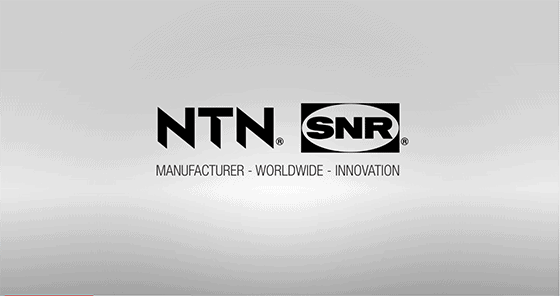NTN Bearing Tolerance Standards: ISO, JIS & Precision Classes Explained
What is Bearing Tolerance?
Bearing tolerances refer to the regulatory standards for dimensional accuracy and running accuracy in rolling bearings. These standards, such as ISO 492 and JIS B 1514, are critical for ensuring that bearings fit correctly onto shafts and within housings.
Tolerance standards are generally divided into two main categories:
-
Dimensional Accuracy: This specifies the allowable error limits for boundary dimensions, including bore diameter, outer diameter, width, and chamfer dimensions. It ensures the bearing can be properly installed with the correct interference or clearance fit.
-
Machining Accuracy: This defines the allowable variation limits for the bore, mean bore, outside diameter, and raceway width (or wall thickness for thrust bearings).
Understanding Bearing Runout and Precision Classes
Beyond dimensions, running accuracy is defined by the allowable limits for bearing runout. This includes the radial and axial runout of both the inner and outer rings (runout with sides).
Accurate tolerance grades are established to classify bearings based on their precision. For example, the JIS B 1514 standard (Tolerances for Rolling Bearings) establishes five specific tolerance classifications: Class 0, 6, 5, 4, and 2.
-
Class 0: Represents average precision (standard grade).
-
Class 2: Represents the highest precision in this series.
Note: The bearing precision becomes progressively more significant as the class number becomes smaller (e.g., Class 2 is more precise than Class 0). The comparative tables below (Table 4.1 and Table 4.2) illustrate the relationship between JIS B 1514 classes and other international standards, helping you identify the correct grade for your application.
Dimensional Accuracy: Bore and Outer Diameter Tolerances
Dimensional accuracy refers to the acceptable limits for the bearing’s boundary dimensions. Ensuring these values fall within the standard bearing tolerance range is essential for determining the correct fit between the shaft and the bearing housing.
Key parameters include:
-
Bore Diameter (d): The inner diameter accuracy, critical for shaft fitting.
-
Outer Diameter (D): The outer dimension accuracy, critical for housing fitting.
-
Ring Width (B or C): The width of the inner and outer rings.
What is Dimension Deviation?
The difference between the actual bearing size and the nominal (target) value is technically called dimension deviation. Industry standards (such as ISO and JIS) strictly control:
-
Mean Bore Diameter Deviation: The average deviation of the bore diameter in a single plane.
-
Mean Outer Diameter Deviation: The average deviation of the outer diameter.
Machining Accuracy & Boundary Dimensions
While dimensional accuracy controls the “size,” machining accuracy (often referred to as form accuracy) controls the shape and variation. It ensures the bearing is perfectly round and cylindrical.
When a series of measurements are taken on a single bearing, we look for variations such as:
-
Single Plane Mean Bore Diameter Variation (Vdp): The difference between the largest and smallest bore measurements in a single radial plane.
-
Mean Outer Diameter Variation (VDmp): The variation limits for the outer diameter.
-
Ring Width Variation (VBs and VCs): The difference between the largest and smallest width measurements.
Machining accuracy reflects the precision of the manufacturing process. It is a vital consideration when calculating shaft runout tolerances to minimize vibration.
Running Accuracy: Radial and Axial Runout Limits
Running accuracy, commonly known as bearing runout, measures the eccentricity (radial runout) and the perpendicularity (face runout) of the bearing during rotation. This is the most critical factor for high-speed applications.
Standard running accuracy parameters include:
-
Radial Runout (Kia and Kea): The radial runout of the inner and outer rings. This strictly limits how much the ring moves up and down during rotation.
-
Axial Runout (Side Runout): Measures the side-to-side wobble of the inner ring bore or outer ring surface (often referred to as perpendicularity to the face).
Strict bearing runout limits are necessary to keep excessive vibration, noise, and component misalignment to a minimum.
Bearing Tolerance Classes: ISO, JIS, and ABMA Compared
International standards strictly regulate bearing accuracy to ensure global interchangeability. While different organizations (like ISO, JIS, and ABMA) use different numbering systems, the tolerance classes are generally comparable.
Key concepts to understand before reading the chart:
-
Standard Grade (Class 0 / Normal): Used for general applications. In ISO and JIS standards, bearings with standard accuracy are classified as Class 0.
-
High Precision Grades: As the class number decreases in JIS/ISO (e.g., from Class 0 to Class 6, 5, 4, and 2), the bearing precision improves.
-
Inch Series Tapered Bearings: These follow the ABMA standard (Class 4, 2, 3, 0, 00) which uses a different progression.
The following comparison chart illustrates the relationship between the Japanese (JIS), International (ISO), and German (DIN) standards.
Note: While not listed in the ISO table below, the ABMA (ANSI) standard uses “ABEC” grades. Generally, ISO Class 0 is equivalent to ABEC 1, ISO Class 6 ≈ ABEC 3, ISO Class 5 ≈ ABEC 5, ISO Class 4 ≈ ABEC 7, and ISO Class 2 ≈ ABEC 9.
Comparison Chart: Bearing Tolerance Standards (JIS B 1514 vs. ISO 492 vs. DIN 620)
| Standard | Standard | Tolerance Class | Tolerance Class | Tolerance Class | Tolerance Class | Tolerance Class | Bearing Types |
|---|---|---|---|---|---|---|---|
| Japanese Industrial Standard | JIS B 1514 | Class 0 Class 6X | Class 6 | Class 5 | Class 4 | Class 2 | All types |
| International Organization for Standardization | ISO 492 | Normal class Class 6X |
Class 6 | Class 5 | Class 4 | Class 2 | Radial bearings |
| ISO 199 | Normal class | Class 6 | Class 5 | Class 4 | — | Thrust ball bearings | |
| ISO 578 | Class 4 | — | Class 3 | Class 0 | Class 00 | Tapered roller bearings (Inch series) |
|
| ISO 1224 | — | — | Class 5A | Class 4A | — | Precision instrument bearings |
|
| Deutsches Institut fur Normung |
DIN 620 | P0 | P6 | P5 | P4 | P2 | All types |
| American National Standards Institute (ANSI) Anti-Friction Bearing Manufacturers (AFBMA) |
ANSI/AFBMA Std. 201) | ABEC-1 RBEC-1 | ABEC-3 RBEC-3 | ABEC-5 RBEC-5 | ABEC-7 | ABEC-9 | Radial bearings (Except tapered roller bearings) |
| ANSI/AFBMA Std. 19.1 |
Class K | Class N | Class C | Class B | Class A | Tapered roller bear- ings (Metric series) |
|
| ANSI B 3.19 AFBMA Std. 19 |
Class 4 | Class 2 | Class 3 | Class 0 | Class 00 | Tapered roller bearings (Inch series) |
|
| ANSI/AFBMA Std. 12.1 | Class 3P | Class 5P Class 5T | Class 7P Class 7T | Class 9P | Precision instrument ball bearings (Metric series) |
||
| ANSI/AFBMA Sts. 12.2 | — | Class 3P | Class 5P Class 5T | Class 7P Class 7T | Class 9P | Precision instrument ball bearings (Inch series) |
Notes: 1. JIS B 1514, ISO 492 and 199, and DIN 620 have the same specification level.
The tolerance and allowance of JIS B 1514 are a little different from those of AFBMA standards
Reference Chart for Bearing Types and Applicable Tolerance Standards (ISO & AFBMA)
Different bearing types follow specific tolerance standards. For instance, Radial Bearings (like Deep Groove and Cylindrical Roller Bearings) generally follow ISO 492. However, specialized bearings have unique requirements:
-
Metric Tapered Roller Bearings: These follow the ISO 492 standard (Classes 0, 6X, 6, 5, 4).
-
Inch Tapered Roller Bearings: These follow AFBMA Std. 19 (Classes 4, 2, 3, 0, 00).
-
Thrust Ball Bearings: These adhere to ISO 199 standards.
Use the reference table below to find the specific applicable tolerance class for your bearing type.
| Bearing Type | standard | Applicable tolerance | Applicable tolerance | Applicable tolerance | Applicable tolerance | Applicable tolerance | |
|---|---|---|---|---|---|---|---|
| Deep groove ball bearing | ISO 492 | class 0 | class 6 | class 5 | class 4 | class 2 | |
| Angular contact ball bearings | ISO 492 | class 0 | class 6 | class 5 | class 4 | class 2 | |
| Self-aligning ball bearings | ISO 492 | class 0 | — | — | — | — | |
| Cylindrical roller bearings | ISO 492 | class 0 | class 6 | class 5 | class 4 | class 2 | |
| Needle roller bearings | ISO 492 | class 0 | class 6 | class 5 | class 4 | — | |
| Spherical roller bearings | ISO 492 | class 0 | — | — | — | — | |
| Tapered roller bearings |
metric | ISO 492 | class 0,6X | class 6 | class 5 | class 4 | — |
| Tapered roller bearings |
inch | AFBMA Std. 19 | class 4 | class 2 | class 3 | class 0 | class 00 |
| Tapered roller bearings |
J series | ANSI/AFBMA Std.19.1 | class K | class N | class C | class B | class A |
| Thrust ball bearings | ISO 199 | class 0 | class 6 | class 5 | class 4 | — | |
| Thrust roller bearings | NTN standard | class 0 | class 6 | class 5 | class 4 | — | |
| Spherical roller thrust bearings | ISO 199 | class 0 | — | — | — | — | |
| Double direction angular contact thrust ball bearings | NTN standard | — | — | class 5 | class 4 | — |
Key to Bearing Tolerance Symbols & Definitions
To correctly read the tolerance charts and dimension tables, it is essential to understand the codes and symbols used in the standards (ISO 492 / JIS B 1514).
Dimensions & Symbols:
-
d: Nominal bore diameter (The inner diameter of the bearing).
-
d2: Nominal bore diameter (specifically for double direction thrust ball bearings).
-
D: Nominal outside diameter (The outer diameter).
-
B: Nominal inner ring width (or nominal center washer height).
-
C: Nominal outer ring width. Note: For radial bearings (except tapered rollers), this is equivalent to the nominal bearing width.
-
T: Nominal bearing width of single row tapered roller bearing, or nominal height of single direction thrust bearing.
-
T1: Nominal height of double direction thrust ball bearings, or effective width of the inner ring and roller assembly.
-
T2: Nominal height from back face of the housing washer to back face of the center washer.
-
r: Chamfer dimensions of inner and outer rings. Note: For tapered roller bearings, this refers to the large end of the inner ring only.
-
r1: Chamfer dimensions of the center washer, or the trim end of angular contact ball bearings.
-
r2: Chamfer dimensions of the small end of inner and outer rings (specifically for tapered roller bearings).
Download NTN Bearing Tolerances PDF
Understanding bearing precision classes and tolerance charts is crucial for selecting the right component for your machinery. Whether you need the standard precision of Class 0 or the high precision of Class 2, adhering to ISO and JIS standards ensures optimal performance and longevity.Need the complete data for your engineering design? The full catalog provides detailed tables on shaft runout limits, housing fits, and specific tolerance classes for all bearing types.
Get the Full NTN Bearing Tolerances Tables (PDF)
View Full Deep Groove Ball Bearing Specifications
